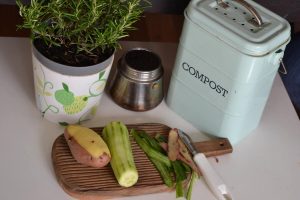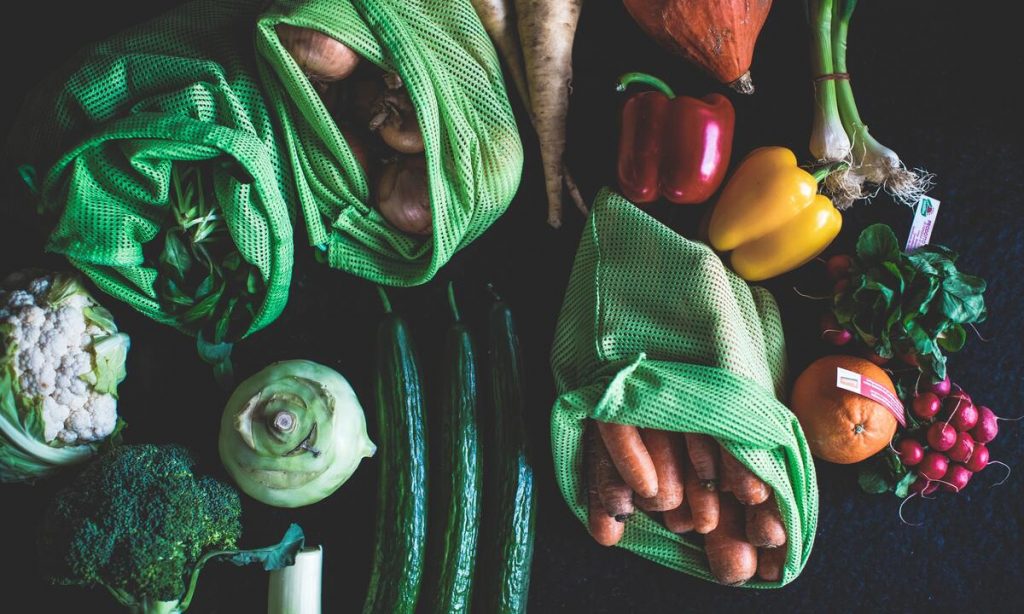According to Mail & Guardian, roughly 45% of South Africa’s food supply ends up lost or wasted. This is a staggering statistic considering that such a high percentage of our population experience moderate to severe food insecurity. Reducing waste through reuse and recycling has long been implemented in many households and businesses worldwide, however the concept of ‘zero-waste’ is more recent.
In this article, we talk about the impact that food waste has on both people and the environment, as well as how to implement zero-waste cooking in your home.
The effects of food waste
All food production requires water and energy. As such, nearly half of the food supply that is wasted bears an extremely high cost to both the environment and the South African economy. Considering how many South Africans have intermittent – or no – electricity and water, it is clear that the resources wasted on food that does not end up being consumed could be better spent elsewhere.
Another impact of food waste is what happens after it ends up in rubbish dumps and landfills. The decomposition of these large numbers of food releases significant amounts of methane and carbon dioxide, therefore contributing to greenhouse gas emissions and global warming.
Finally, the amount of food wasted could easily help feed those South Africans who are in need, therefore helping to improve food security in the country.

How to have a zero-waste kitchen
Here are some ways that you can help mitigate the amounts of food waste produced in South Africa, from your own home.
Cook all of your food
There are many parts of our food that we throw away despite them being perfectly edible. Pumpkin and butternut seeds can be roasted and then eaten plain or sprinkled on salads. The stems of many vegetables, such as broccoli and cauliflower, are full of vitamins and minerals and should be eaten along with the rest of the vegetable. Stalks, peels and offcuts of vegetables – and even the bones from meat – can be collected and used to make stock.
Prioritise preserving
Making sure that your food does not go off before you have the chance to eat it is the key to a zero-waste kitchen. For this reason, it is important to familiarise yourself with all of the ways that food can be preserved. Firstly, freezing ingredients vastly extends their shelf life. Many fruits and vegetables can be frozen and then later cooked or used in smoothies. Fresh stock, pesto, sauces, milk, cheese and yoghurt can also all be frozen until you need to use them. Another great way to preserve is to pickle – from eggs to jalapeño peppers there are so many ingredients that lend themselves to being pickled. For inspiration, check out these 4 easy pickling recipes.
Only buy what you need
A large aspect of zero-waste living is only purchasing what is really necessary – a principle that can be applied to your kitchen as well. Instead of buying the big bags of oranges or potatoes from the grocery store that may be too much for your household, go to local markets where you can purchase the exact number of fruits and veggies that you need. Additionally, zero-waste stores are becoming more common around the country. These are shops that you can take your own containers to, such as paper bags and glass jars, and buy the exact volume that you need of foods like flour or cooking oil.
Try composting
Sometimes, there is food that has to be discarded. This can include the inedible parts of fruits and veggies, like banana peels, or other food waste like teabags and coffee grounds. The best way to get rid of these is to compost them. Composting means the food is actually able to break down correctly, unlike in landfills, therefore reducing the amount of greenhouse gas emissions. Additionally, composting allows you to impart valuable nutrients into your soil allowing you to benefit from the food that you have had to discard.
Clean out your fridge
We often go grocery shopping before we have eaten everything in our fridge. One way to practise zero-waste cooking is to try and only go shopping when there are no more ingredients left in your fridge. This forces us to be creative in our cooking and actually eat the contents of the fridge before the food goes bad. This also means that you are less likely to accidentally double-up on ingredients that you already have, and can be a great way to cut down on costs when grocery shopping.
Don’t discount leftovers
Oftentimes, cooking is driven by what we want to eat rather than by the ingredients on hand. Shift your perspective by cooking according to what you’ve already got. For example, if you have some leftover cooked potatoes, you could try making gnocchi for dinner. Alternatively, if you have some bread going stale, then you can turn it into French toast. Leftover cooked chickpeas could be blended into hummus.
READ MORE: How to store leftovers
Share and donate
Sometimes it is simply not possible to get through all of your food before it goes off. If there is food in your fridge or kitchen cupboard that you know you won’t get to before it expires, consider giving it away to friends or family, or donating it to someone in need. The key is to give it away before it has gone off, which means being mindful of what ingredients you have and how long they will last for. That way, you haven’t had to throw away food and you’ve helped to feed someone else.
Did you like this article? Follow us @foodandhomesa on Instagram for more!
ALSO SEE: Locally made sustainable products for your home
Featured Image: Markus Spiske Via Unsplash

